CROPPIES ACRE 1798 MEMORIAL PARK PHOTOGRAPHED 26 OCTOBER 2019
I live in the city centre and based on experience I can say without doubt that the homeless problem is increasing at an alarming rate. Today I counted seven tents, occupied by homeless people, in this public park. A few months ago there were two. However, there was little sign of what might be described as anti-social behaviour.
Within the park there is a memorial and a plaque which refers the the "Croppy's Acre" as the official name is currently the "Croppies Acre 1798 Memorial Park".
[WHAT I SAID IN OCTOBER 2018]
The good news is that this park now appears to be safe to visit and the decision to have it open twenty four hours a day must have solved the anti-social problems that had resulted in it being closed to the public for extended periods of time.
[WHAT I SAID BACK IN NOVEMBER 2016]
There are two separate parks which may be related but in general most tourist guides are unaware of this fact to the extent that some claim that Anna Livia is located in the park beside the the Museum Luas Tram Stop.
The major park, the one normally associated with the museum, is officially the Croppies Acre 1798 Memorial Park while the smaller park featuring Anna Livia and a small pond is the Croppies Memorial Park. The distinction is important because the larger park has been closed to the public for extended periods.
For many years due to anti-social behaviour, mainly drugs related, the major memorial park was off-limits to the public. There was also problems with homeless people occupying parts of the park. Even today, there was a tent towards one corner of the park. One cannot blame the homeless for taking advantage of the available space.
On Tuesday, 14th June at 2:00 p.m. the Croppies Acre 1798 Memorial Park, Wolfe Tone Quay, Dublin 7 was once again open to the public but I did not get a chance to visit until today [November 7 2016]. Having been conditioned to the park being always closed I found the fact that the gates were partly opened a little bit unsettling and as I was the only person [if one ignores the tent and one person who left immediately I arrived] in the park I was a bit worried that an official might come along and lock the gates without informing me. This has happened to me in the past elsewhere.
Following discussions in 2013 with the Office of Public Works it was agreed that the management of the 4.3 acre Park would transfer from the Office of Public Works to Dublin City Council.
Dublin City Council’s Parks and Landscape Services have carried out an extensive works programme to upgrade the park and make it more accessible for the citizens of Dublin and visitors to the city.
The works include a new circulatory path system, upgrading of the existing pedestrian gates and the provision of a new pedestrian gate at the south west end of the park. Existing memorial structures have been upgraded and general landscape improvement works have been carried out. The total cost of the works, were in the order of €120,000.
To be fair the park was in excellent condition when I visited today but the presence of a tent was a bit worrying as was the careless attitude to properly opening the gates.
The name ‘Croppy’ was used in Ireland in the 1790s and was a reference to the rebels who closely cropped their hair to mimic the French Revolutionaries of the period who cut their hair in contrast to the aristocracy who wore powdered wigs.
Historically the Croppies Acre was located on land under common pasturage and part of what was termed ‘Oxmantown Green’.
In the 17th century, a portion was later presented to the Viceroy, the Duke of Ormond to build a palace, however this was never built and the site was sold to the City Authorities for a Barracks. Built in 1704, it served as a military base for 250 years, it was formally the Royal Barracks and later Collins Barracks.
The Esplanade where the Croppies Acre is located today was fully constructed by the 1850s, complete with boundary walls and ornate railings. During the Great Famine, the Esplanade was the site of a food kitchen. By the 1900s, the land was levelled to form two football pitches for the military. In 1997, the Decorative Arts Section of the National Museum was opened in Collins Barracks and the Memorial Park was subsequently designed and laid out in 1998.
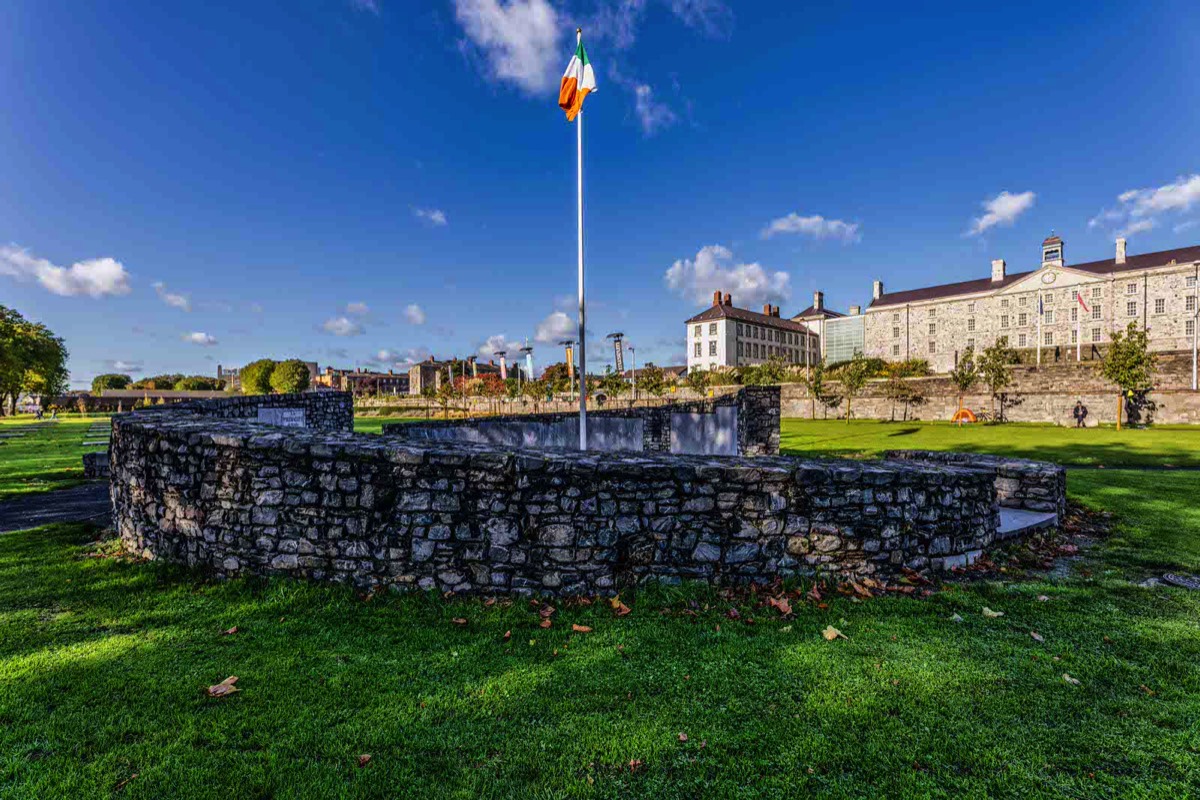
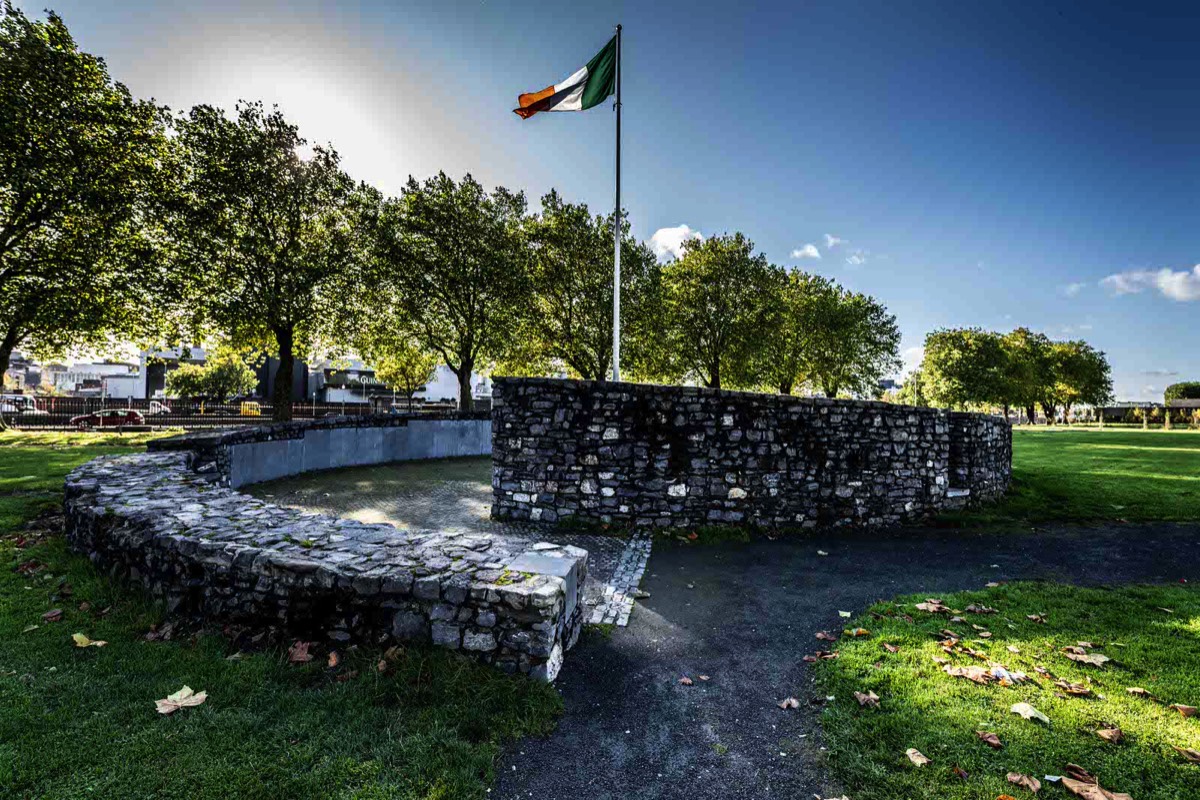
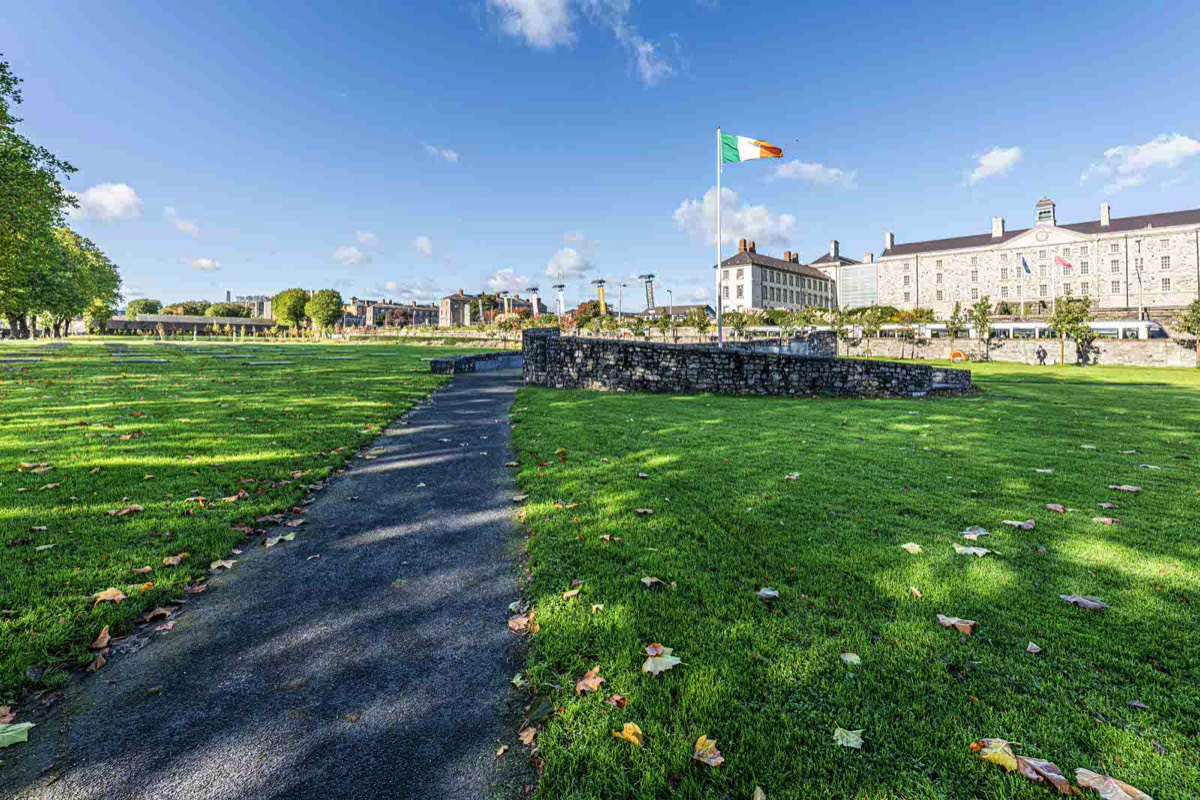
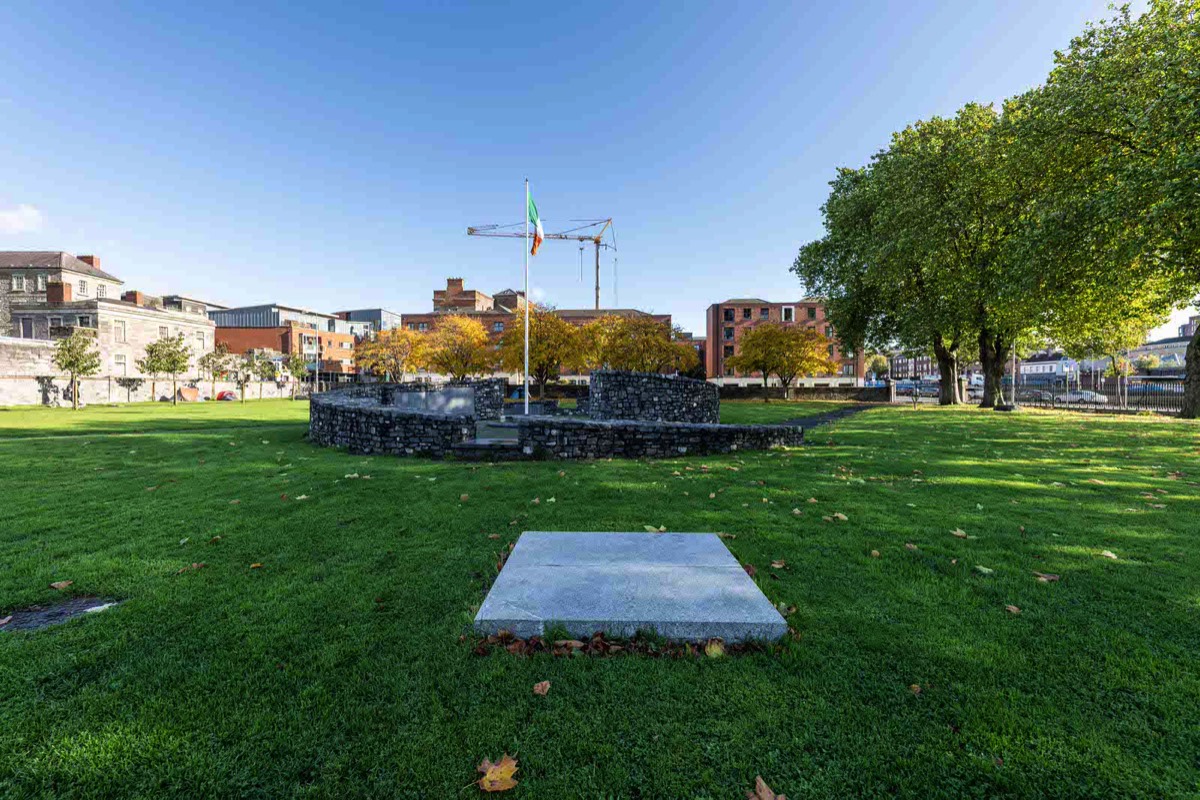
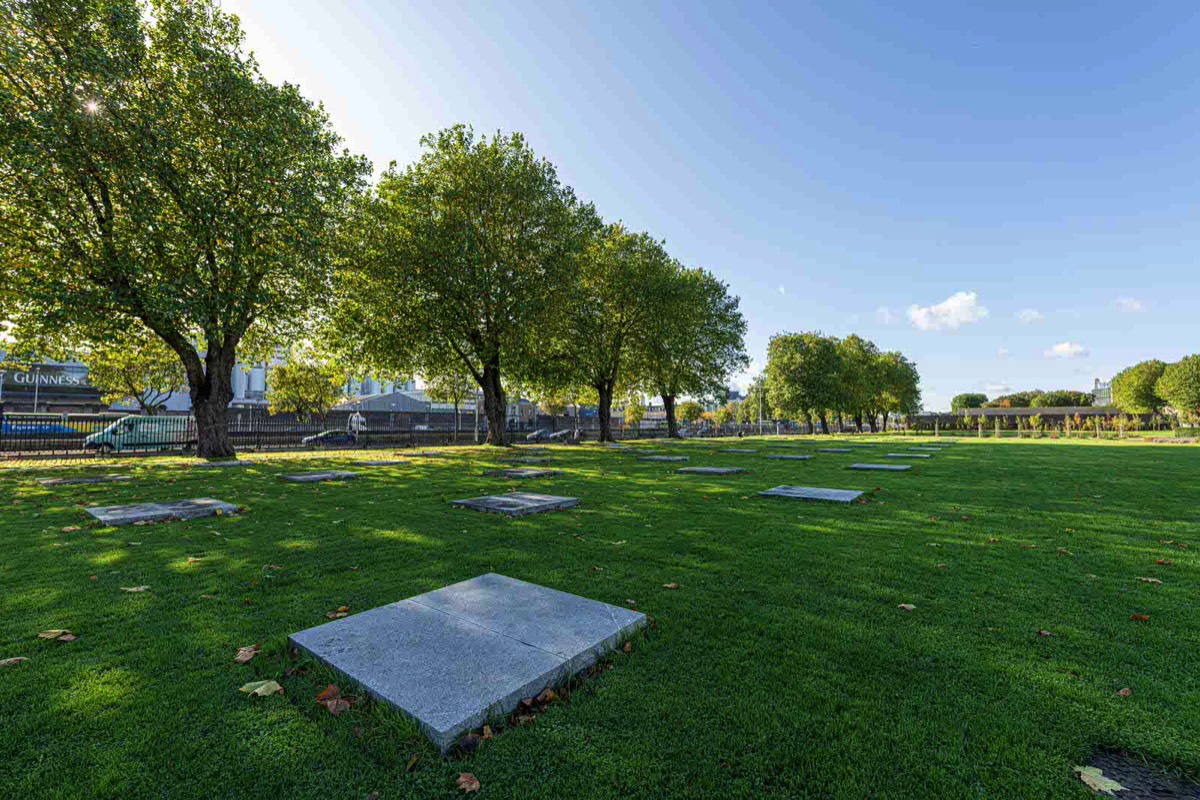

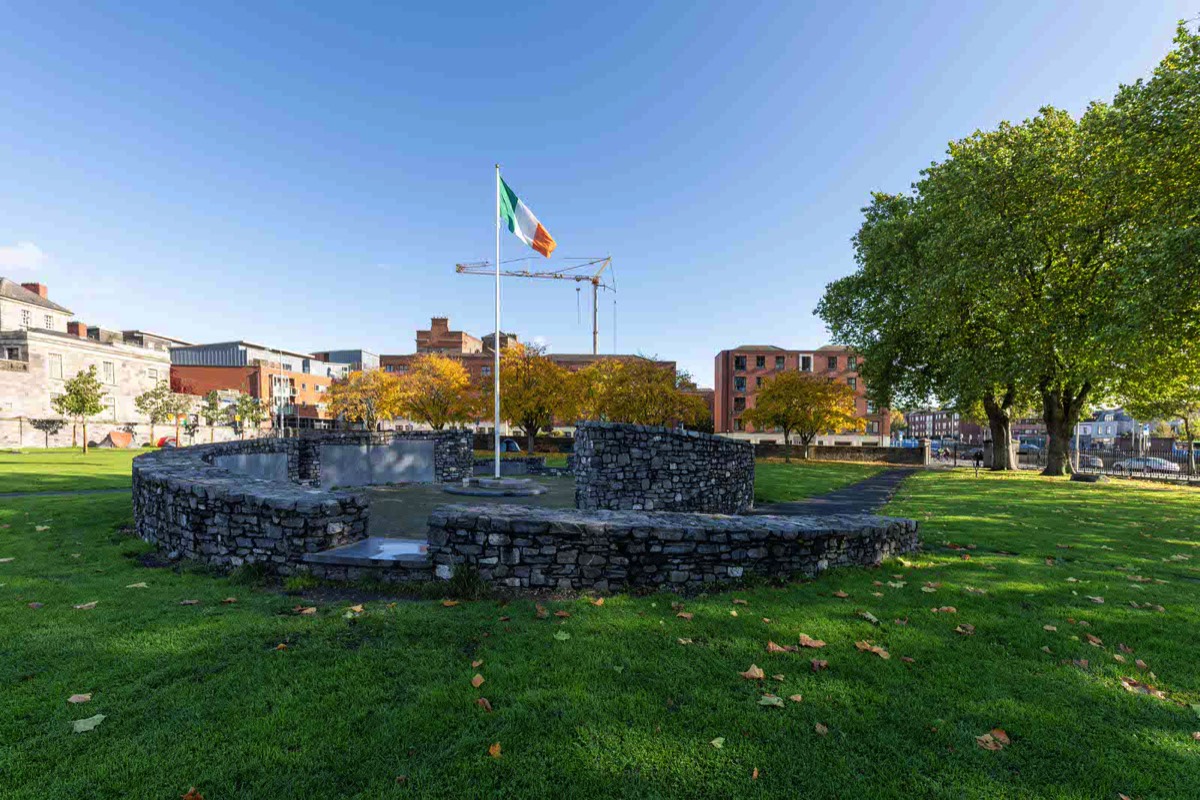
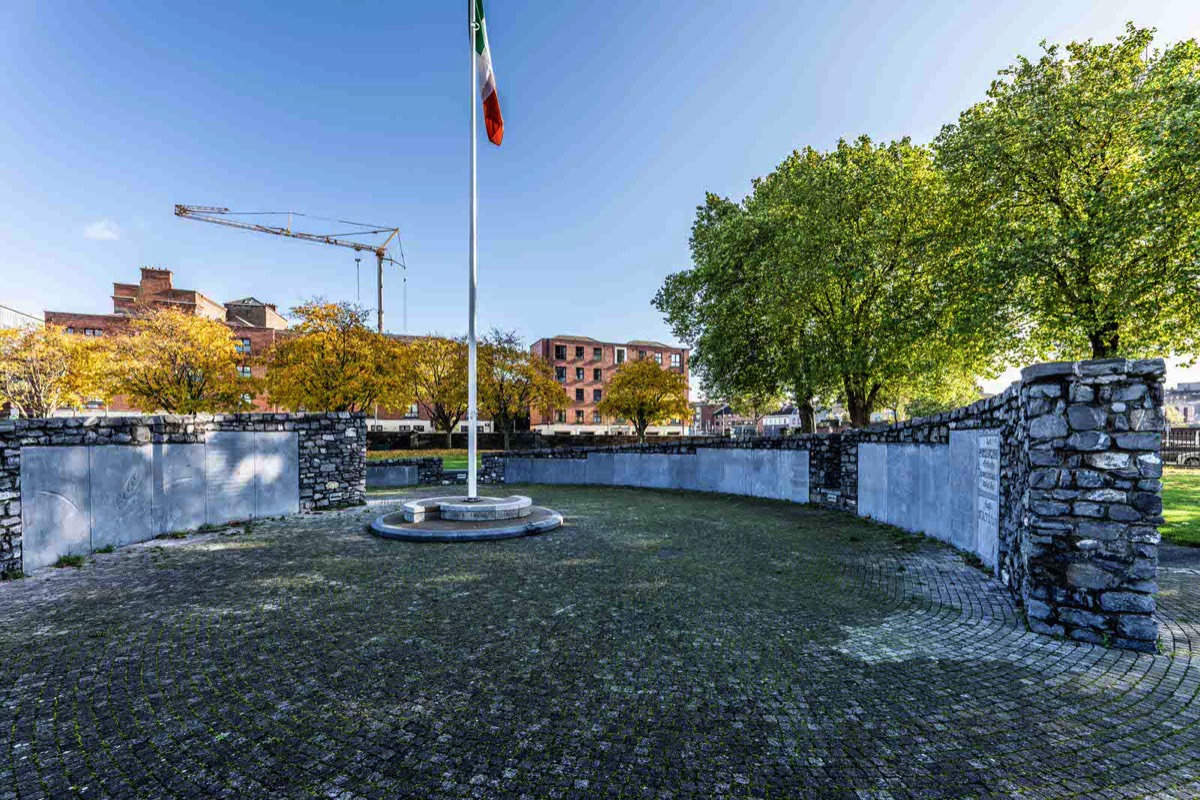

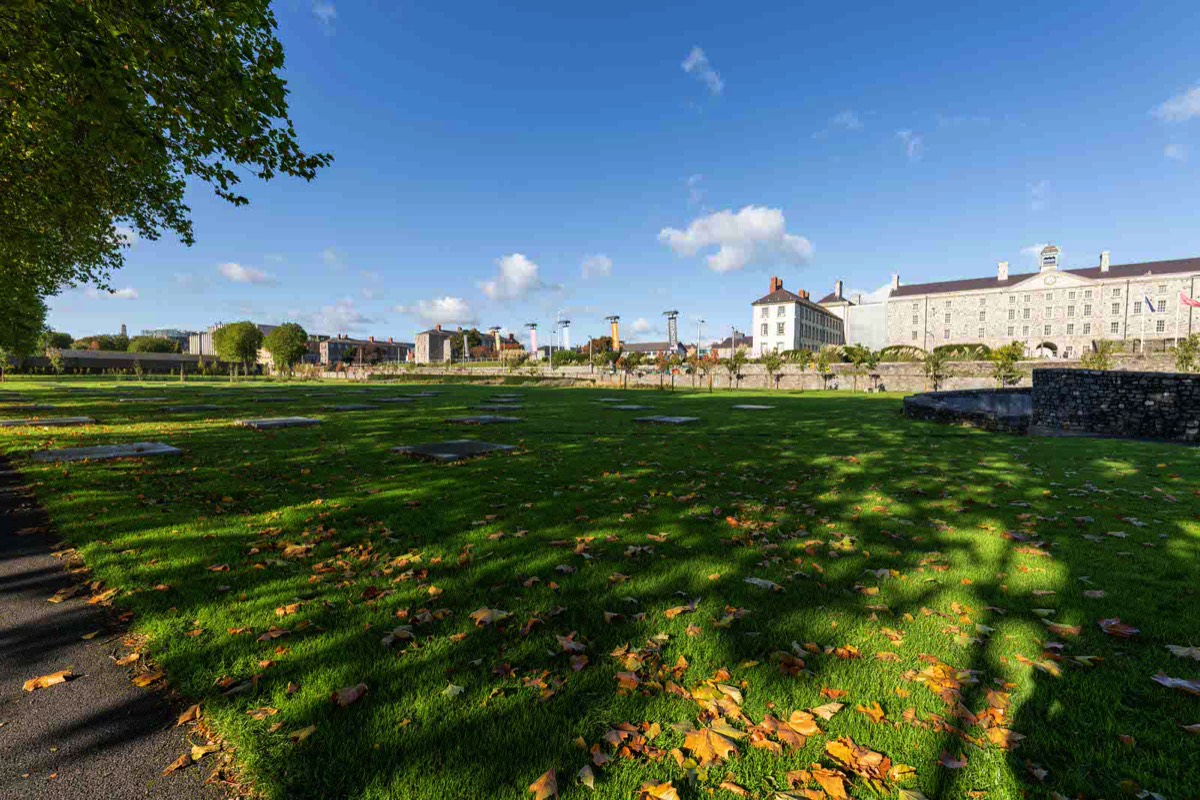
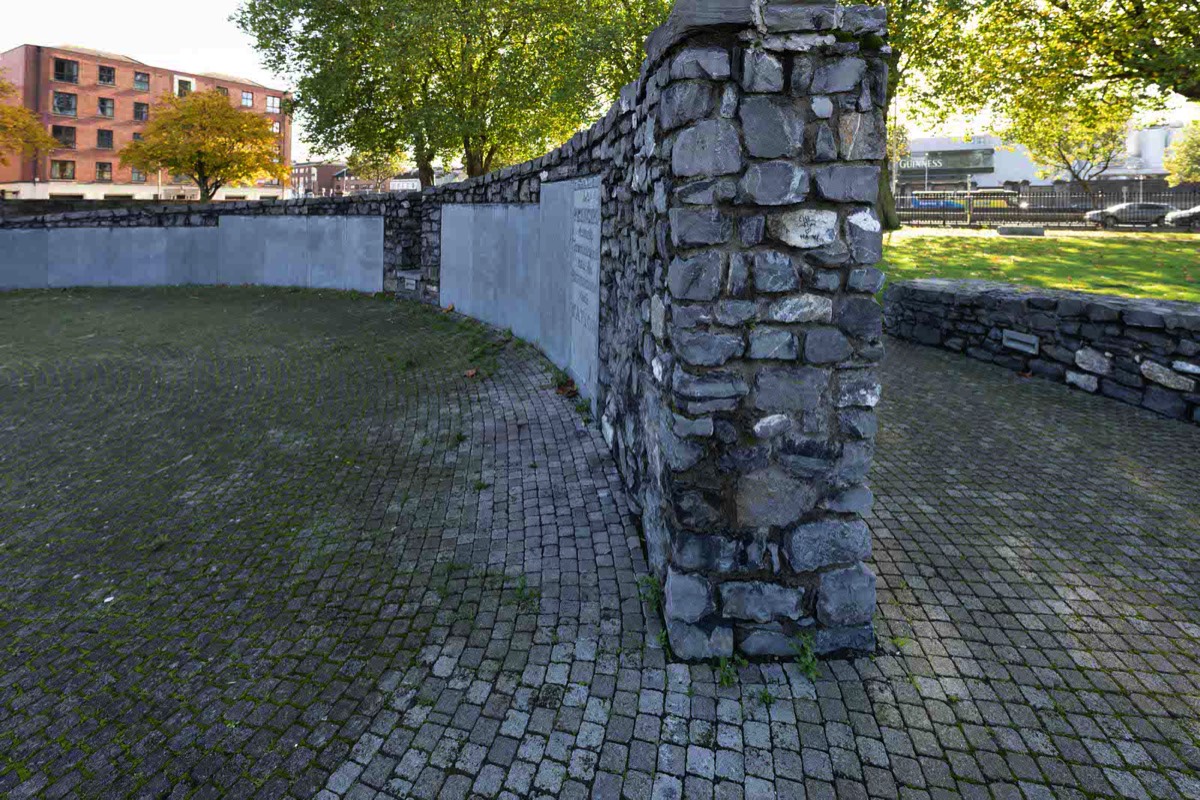

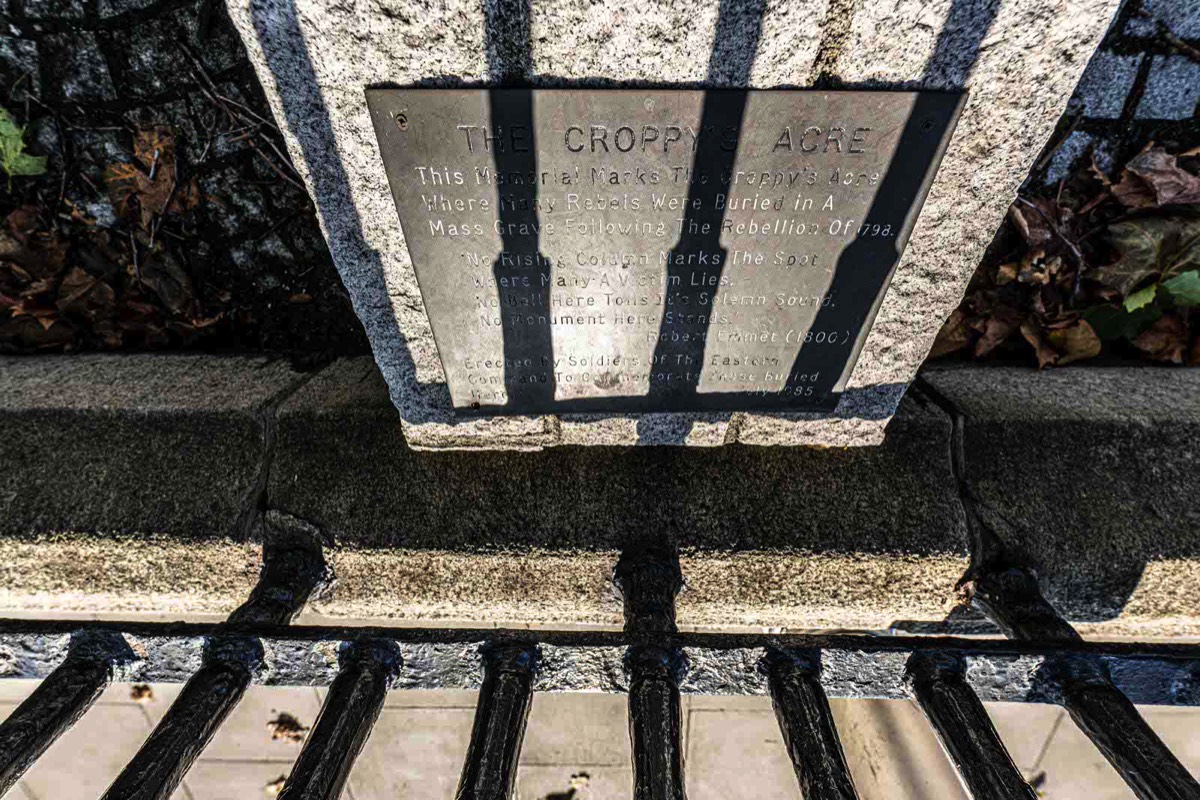
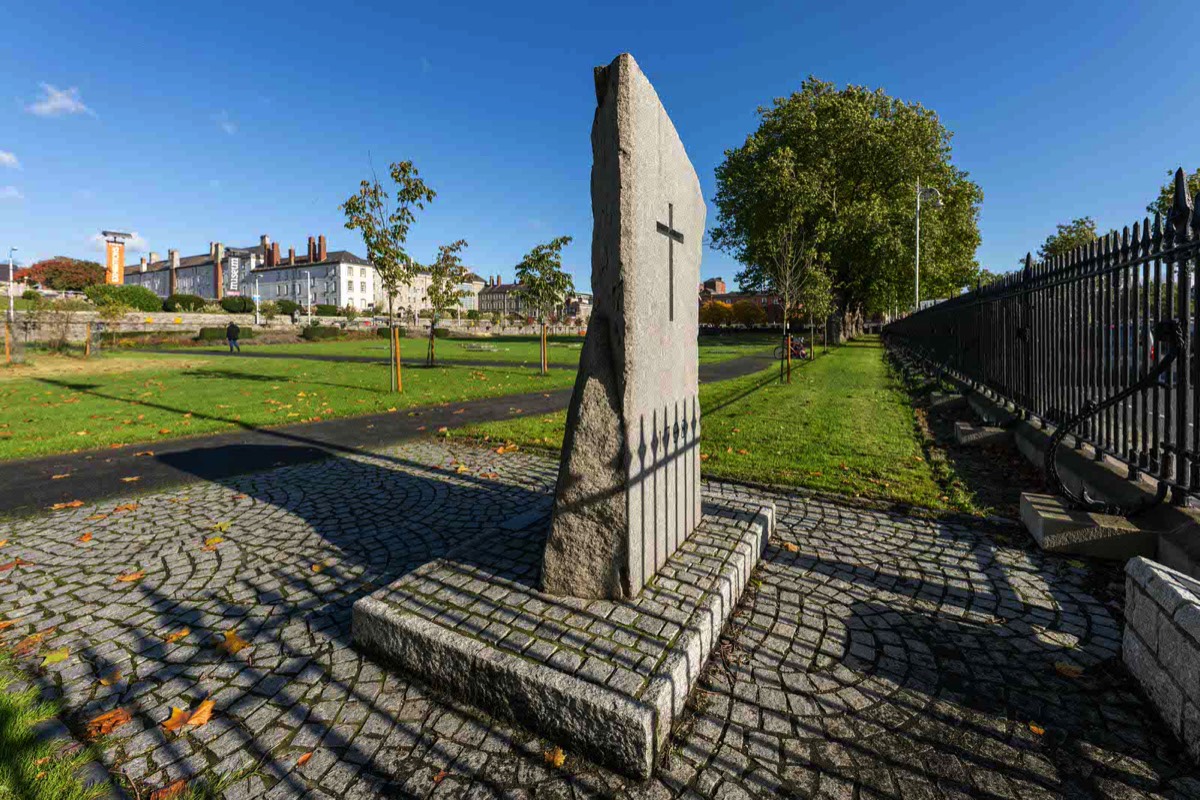

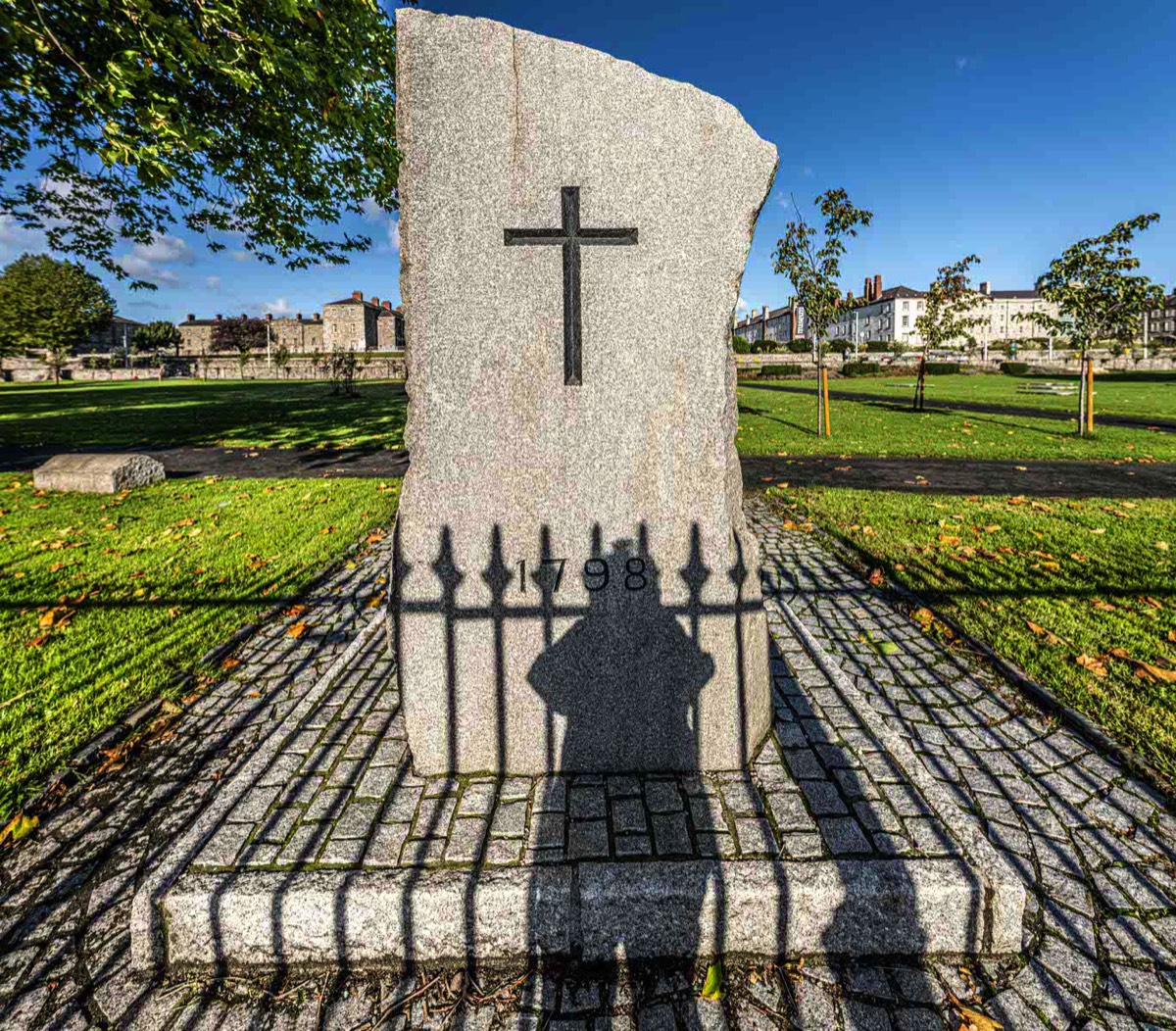
You will find links to buy products from Amazon, Google and other partners. If you click on these links, you’ll find that the URL includes a small extra piece of text which identifies that the click came from my websites. This text is an affiliate code, and it means that I get a small percentage of the money you spend if you choose to buy that product, or, in some cases, other products from the site soon after. These affiliate links help pay the costs of producing my websites and ensure that the content is free to you.
COPYRIGHT INFORMATION BELOW APPLIES ONLY TO PHOTOGRAPHS

This work by William Murphy aka Infomatique is licensed under a Creative Commons Attribution-NonCommercial-ShareAlike 4.0 International License.
Permissions beyond the scope of this license may be available at https://excellentstreetimages.com/in-the-year-twentytwenty/copyright/.
